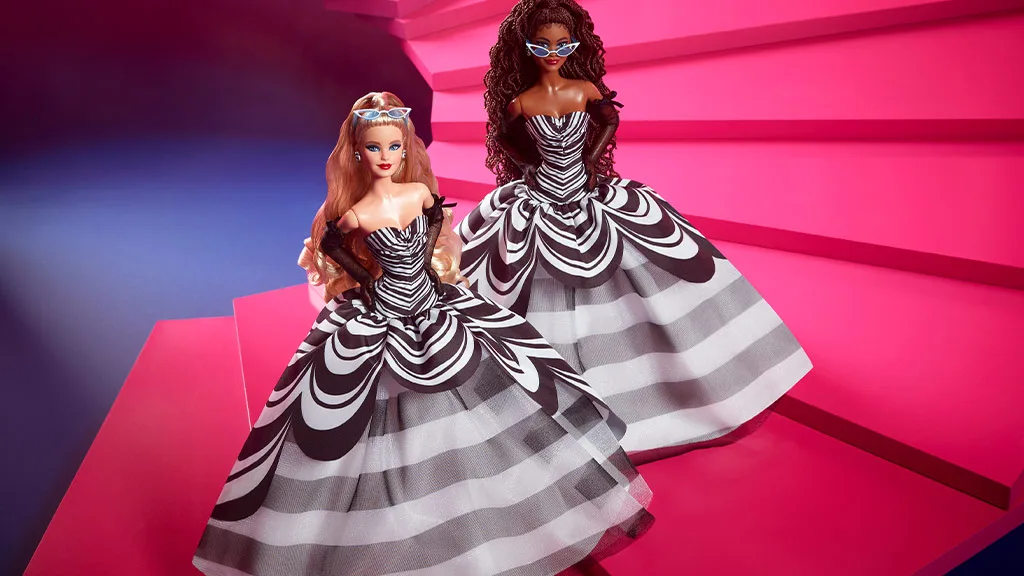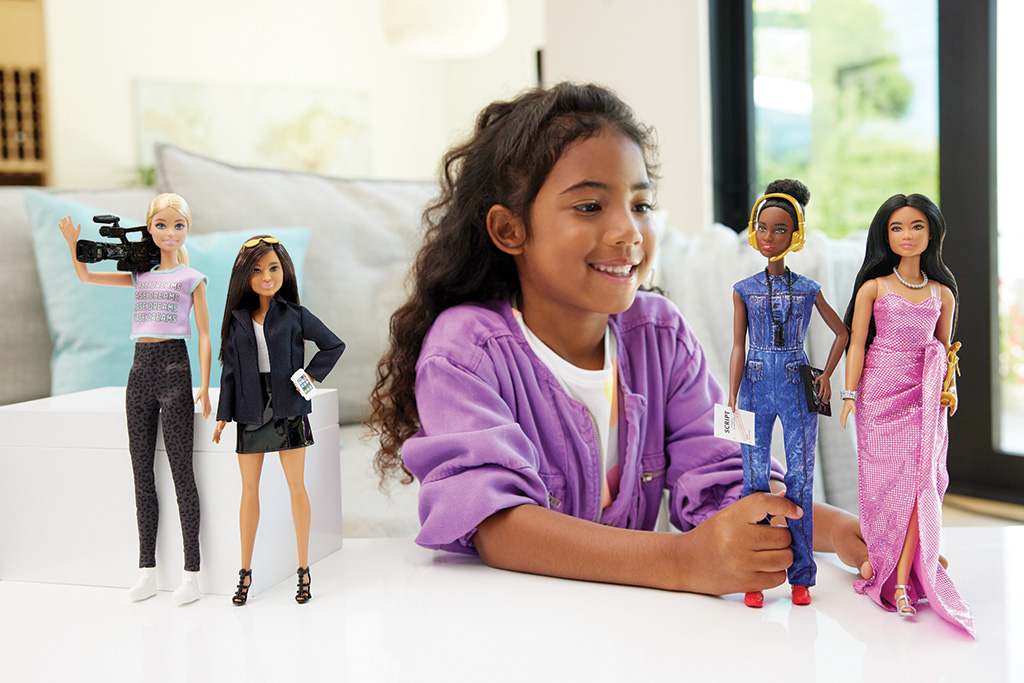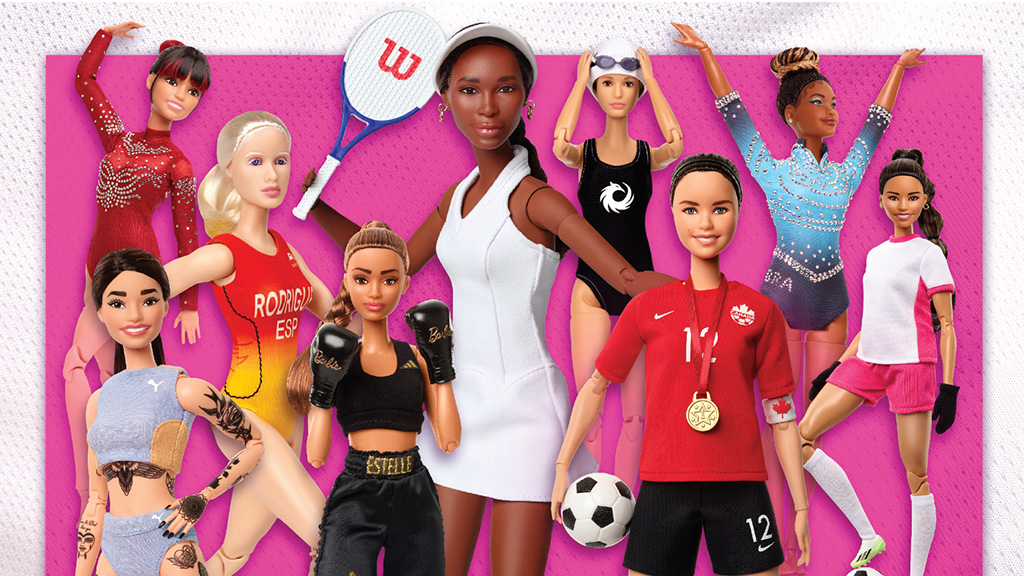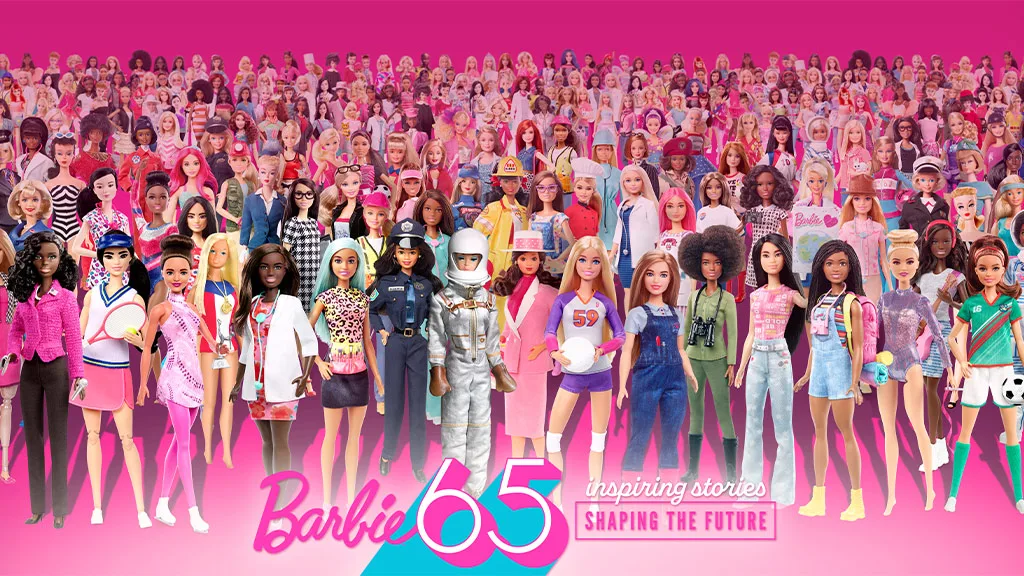Don’t let her looks fool you: Barbie turns 65 this year.
Throughout the years she’s been an astronaut, a chicken farmer, and a ballerina; she’s donned haute couture and streetwear; become a Hollywood movie star; and maintained her status as both an inspirational and an aspirational figure for little girls.
There’s just one question: How does she do it?
In one sense, attitude is everything, but there’s more to it. “Barbie strives to live authentically and chases her dreams no matter what, whether that’s on screen, through the diverse product offerings, or through inspiring stories,” says Krista Berger, Senior Vice President of Barbie and Global Head of Dolls at Mattel. “Above all, Barbie encourages fans to embrace their individuality and dream big, showing them that they can be anything while staying true to themselves.”

For her 65th birthday, Mattel pulled out all the stops, including crafting one-of-a-kind Barbies for nine professional female athletes, releasing new commemorative products, and honoring noteworthy women. “We kicked off Barbie’s 65th anniversary celebration in March with the 2024 International Women’s Day Role Model global lineup, featuring inspirational storytellers such as Shania Twain and Viola Davis,” Berger says.
A DOLL FOR EVERY GIRL
And though Barbie has been inspiring girls of all sorts for 65 years, that inspiration has not always been equal. This disparity is highlighted in the recent documentary Black Barbie, which debuted on Netflix this Juneteenth and chronicled the first Black Barbie doll to hit the market. Barbie was famously modeled upon Mattel co-founder Ruth Handler’s daughter, and so for much of her existence appeared as white with blonde hair and blue eyes. Though the first brown-skinned doll within the Barbie universe was released in 1967, it wasn’t until 1980 that a bonafide Black Barbie hit the market, thanks to Kitty Black Perkins, a pioneering designer at Mattel.
The power of seeing a Black Barbie and having diverse representation in the doll aisle is no small thing — take Brown vs. the Board of Education, for example. During the trial that dismantled segregation in the U.S., a selection of Black and white dolls were used to demonstrate the negative impacts of segregation. Most of the children preferred the white dolls versus their Black counterparts.

The impact of having Barbie, the most iconic and recognizable doll of all time, finally appear as Black cannot, therefore, be overstated. “I had a sense that it was going to be well received,” Perkins said in a Barbie Signature interview. “I had no idea it was going to be as groundbreaking as it is now, but if you look at the history of Barbie, the reason Barbie is No. 1 is because she was the very first of her kind. When we did Black Barbie, she too became the very first of her kind.”

A FASHION ICON
Barbie’s effect on culture and her inspirational quality are inseparable from her fashion. Karan Feder is a researcher, historian, and author of the book Barbie Takes the Catwalk: A Style Icon’s History in Fashion. She’s also curated a touring exhibition entitled “Barbie: A Cultural Icon” that lands at the Museum of Arts and Design in Manhattan this October.
For Feder, Barbie’s hold on the culture came full circle a decade ago.: “What happens in 2014 is Moschino’s Jeremy Scott releases a super popular runway show where he outs that his muse for the fashion is Barbie. And that is the first time where Barbie has inspired a professional fashion designer rather than professional fashion designers, up until that point, inspiring Barbie’s clothes,” she says.
The impact on fashion is where Barbie entered a new era of inspiration, Feder adds, not just as an aspirational figure for kids, but as a cultural touchstone.

INSPIRING GIRLS TO BE ANYTHING
Above all, it’s perhaps a slew of careers that have been the most integral part of Barbie’s inspiring nature. “The other thing that you can’t deny again, is the fact that Barbie, as even a teenager, was always working. And she always had a job at a time when it wasn’t a given, that women were always going to be working,” Feder says. “And I think that is also an aspirational quality … they were at least introduced to that concept by Barbie.”
Berger reiterates this, explaining that not only has Barbie always held jobs, but she has often held jobs in which women have been historically underrepresented. “For instance, the first Barbie doctor doll was released in 1973, a time when women only made up 5% of all physicians in the U.S.,” she says. Even if Barbie’s first career doesn’t scream “empowerment,” it marked the beginning of her career legacy. “Barbie started working from day one. She was born as a fashion model, so she’s always been a working girl,” Feder adds.
The U.S. Chamber of Commerce reports that in February 2020, 59% of women were participating in the labor force, just a 21% increase since 1960, the year after Barbie was introduced, a number that’s still about 10% lower than men’s participation. Though the elusiveness (and therefore the allure) of work may have dwindled since 1959 for little girls, the discrepancy in labor force participation and equal representation at the highest levels is why Barbie’s career frenzy hasn’t hit the brakes one bit. This year, Mattel revealed that Barbie’s 2024 Career of the Year celebrates women in film, an industry in which women fill just 21% of roles such as directors, writers, and producers for the 250 top-grossing films. It’s an appropriate honor coming on the heels of last year’s Barbie: The Movie, a record-breaking box office smash that was nominated for an Academy Award for Best Picture.
At 65, Barbie still offers little girls the opportunity to imagine dream careers — or work-free dream lives — while allowing them to see themselves both physically and through the qualities Barbie embodies. In other words, Barbie’s true work, that of inspiring, shaping, and reflecting the culture, goes on.

A version of this feature was originally published in The Toy Book’s 2024 LA Fall Toy Preview Issue. Click here to read the full issue! Want to receive The Toy Book in print? Click here for subscription options!


